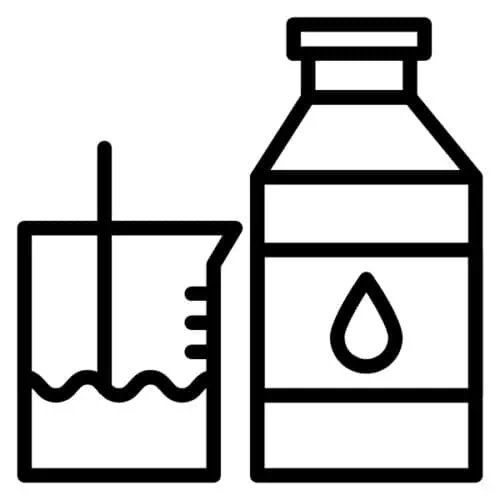Precision in UV resin formulation is essential to achieving consistent, high-quality results across coatings and adhesives. The final properties of the cured product, such as clarity, hardness, flexibility, and adhesion, are directly determined by the balance of each chemical component. Even small miscalculations in formulation can lead to under-curing, yellowing, or surface defects that compromise performance and product reliability.
A successful formulation for UV-cured resins depends on four key materials working together:
- Oligomers: Oligomers are the backbone of the formula that determines mechanical strength and flexibility.
- Monomers: These are reactive diluents used to control viscosity and modify the performance of some oligomer properties.
- Additives: These are specialized components that add or fine-tune properties such as adhesion, flow, or resistance properties.
- Photoinitiators: Photoinitiators are compounds that absorb UV energy to initiate polymerization and crosslinking.
Mastering the balance of these materials ensures that the cured resin delivers the intended physical, mechanical, and optical performance.
Critical Formulation Parameters to Consider
Developing an effective formulation for UV-cured resins begins with defining the intended application and aligning each material decision with performance goals. Four key factors influence formulation success:
- Target Application: Start by understanding the end-use application. The needs of a flexible coating differ greatly from those of a rigid, high-strength adhesive or an inkjet ink. Determining whether the resin will be used in a coating, adhesive, ink, or 3D printing system is the first step in tailoring chemistry to performance goals.
- Substrate Compatibility: Adhesion must be optimized for plastics, metals, glass, or composites. Using the right adhesion promoters ensures a strong, lasting bond.
- Application Method: Spray, dip, roll, and jetting processes require specific viscosity and flow characteristics to achieve consistent coverage and film formation.
- Curing Conditions: Lamp type, light intensity, and exposure time must align with the photoinitiator system and film thickness to achieve complete polymerization.
When these parameters are balanced effectively, the resulting formulation for UV-cured resins delivers durability, clarity, and stable performance.
Mechanical and Physical Property Parameters
A high-performance acrylic resin formulation must meet mechanical and physical requirements that match its intended application. Key parameters to consider include:
- Viscosity: Viscosity governs how the resin flows and levels during application. Lower viscosity supports jetting or fine-line printing, while higher viscosity builds thicker films and minimizes sagging.
- Hardness and Scratch Resistance: These properties are essential for coatings exposed to abrasion or handling and are influenced by the oligomer’s molecular structure and the degree of crosslinking.
- Flexibility and Elongation: This ensures durability on flexible substrates or parts that experience movement.
- Adhesion: Adhesion defines how well the resin bonds to the substrate, which is critical for long-term stability and performance.
Chemical and Environmental Resistance
A well-designed UV-curable resin formulation must maintain performance when exposed to a variety of chemical and environmental stresses. Several key resistance factors guide the selection of materials within an acrylic resin formulation:
- Chemical and Stain Resistance: This protects against solvents, oils, and cleaning agents. This property is critical for coatings, sealants, and adhesives used in chemically aggressive environments:
- Thermal Resistance: Thermal resistance ensures the resin retains its properties during exposure to high processing or service temperatures. This is especially important for electronic, automotive, and industrial components.
- Weatherability and UV Stability: These characteristics ensure the resin maintains clarity, gloss, and color stability during long-term exposure to sunlight and atmospheric conditions.
- Hydrophilic or Hydrophobic Properties: These properties can be adjusted to control moisture interaction, either promoting wetting or resisting water uptake, depending on the application.
Balancing these factors allows formulators to create UV-cured resin formulations that remain stable, durable, and reliable across a wide range of environments.
Partnering With Toagosei for Your Formulation Needs
At Toagosei America, we understand that precision in acrylic resin formulation goes beyond ingredient selection. It is about engineering resins for exact performance targets. Our Aronix® and Aron Oxetane® product lines deliver the building blocks for next-generation UV-cured resin formulations, optimized for clarity, hardness, and flexibility.
Our team works directly with chemists and product developers to tailor formulations that meet specific curing, adhesion, and processing goals. Contact us to learn more about our expert formulation capabilities and discuss your needs today.

